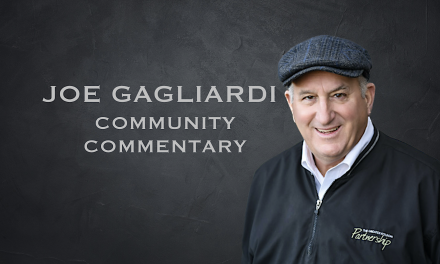Congratulations California, you’ve done it again — retained your title of having the highest level of poverty of any state.
The Census Bureau released new economic data Tuesday, including both official poverty rates for 2022 and what are called “supplemental” rates.
The former, based on formula several decades old, involves only a few basic factors and applies them to all states, regardless of their economic and sociological differences.
Economists consider the official rates to be misleading because of their simplistic factors, but they remain in the law because they are the basis for many federal and state programs.
The nationwide official poverty rate released on Tuesday is 11.5% and California’s is virtually identical at 11.4%. Other states range from as high as 18.3% in New Mexico to as low as 7.1% in neighboring Utah — an anomaly that itself should warrant deeper investigation.
More than a decade ago, those who study poverty persuaded the Census Bureau to adopt a more realistic method of gauging poverty, one that takes into account differentials of living costs and other factors.
The “supplemental” rates are calculated on three years of data and California has held the top spot for a number of years, almost entirely because of its extraordinarily high costs of housing, utilities, fuel and other consumer needs.
Nationally, the new supplemental rate is 9.8% but once again California tops the states at 13.2 percent, more than a third higher than the national rate.
Other states with double-digit supplemental rates are mostly in the South, such as Alabama and Arkansas, while on the other end of the scale are states with low single-digit rates, the lowest being Wisconsin’s 5.1%.
California’s high poverty rate reflects not only its high living costs, but its substantial underclass of low-income families, many of them recent immigrants who struggle to keep roofs over their heads and food on their tables.
The Public Policy Institute of California has used a methodology similar to that of the Census Bureau to calculate poverty variations within the state and has found that in 2021 more than a quarter of Californians were living in poverty or near-poverty.
The PPIC also found that the state’s highest level of functional poverty is in Los Angeles County, which has a huge underclass but very high housing costs. Lowest poverty rates are largely found in the San Francisco Bay Area, where high technology industry incomes are better able to cope with high housing costs.
The ultimate irony of California’s high poverty rate is that it’s a deep-blue state where all of the political power is held by left-leaning Democrats who profess to sympathize with the plight of the poor.
Gov. Gavin Newsom and Democratic legislators have acknowledged the state’s shameful position atop the poverty ladder and enacted a number of programs aimed at lowering the rate.
Most have involved efforts to increase incomes of the poor through tax credits, increases in welfare benefits, raising minimum wages, and encouraging union membership in low-income economic sectors.
However, whatever increases the poor see in their incomes are often rapidly absorbed by increasing costs of living, particularly for housing.
Meanwhile, the many state-level efforts to increase the housing supply — and thus moderate costs — have failed thus far to have more than a marginal impact on the chronic shortage of shelter.
The state’s other high living costs, especially for utilities, are equally resilient and if anything will grow even more as the state makes its much-vaunted conversion into a net-zero emission economy.
In all likelihood, therefore, California is destined to continue its unenviable position as the nation’s poverty leader.
Dan Walters is a journalist and author who writes for CALmatters.org, a nonprofit, nonpartisan media venture explaining California policies and politics. Folsom Times is an authorized CalMatters media partner in an effort to keep our local community




